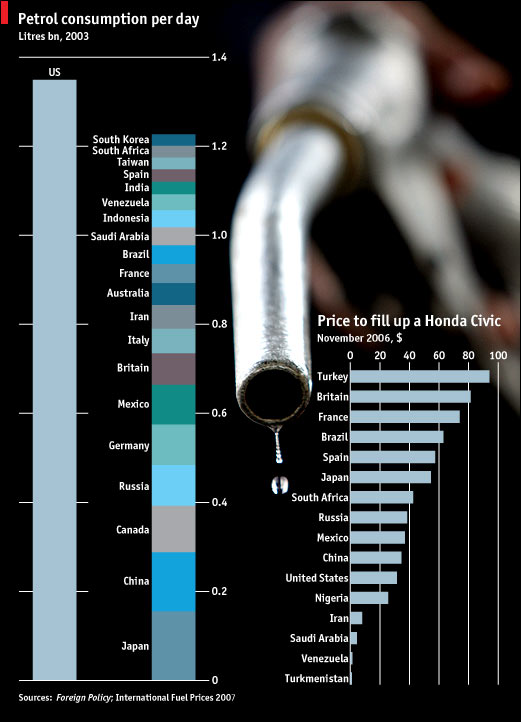Accelerating new energy technologies

Prof. Richard Lester is now working with others to make new energy technologies as paradigm shifting as the cell phone.
When MIT researcher Richard K. Lester first started delving into innovation, mobile phones were big, clunky devices used in cars. To its credit, the fledgling mobile phone industry did not equate future success with turning out the best possible car phone.
Lester, director of the Industrial Performance Center (IPC) at MIT and professor of nuclear science and engineering, is convening a posse of MIT powerhouse thinkers to figure out how solar and other new energy technologies can become as ubiquitous and paradigm shifting as the cell phone.
Unlike some pundits, Lester says it’s not just a matter of getting the price right.
“We have to figure out how to accelerate the introduction of new energy technologies in different sectors,” says Lester, who has led studies of national and regional productivity, competitiveness, and innovation for governments and industrial groups around the world. “The common debate is about which technology is better, but what we have paid less attention to as a country is the ways in which new technologies find their way into the marketplace.”
Lester has enlisted dozens of MIT experts over the years to pay attention to this and other issues in innovation. Through the IPC, an MIT-wide research unit based in the School of Engineering, interdisciplinary teams of economists, political scientists, scientists, engineers, and management and policy experts have conducted more than 2,000 visits to producers of everything from cars to acid-washed jeans. They have talked to researchers, government officials, and corporate executives to figure out how innovation happens and how the products of innovation find their way to consumers.
Power plants, transmission lines, and wind turbines are on a larger scale than phones and jeans, but energy is a commodity nevertheless. It’s a commodity most people “aren’t particularly interested in. Energy enables us to cook, live in a pleasant environment, get from place to place, but energy itself is just one input into other things we care much more about,” Lester said.
USING ENERGY EFFICIENTLY
“What’s also clear is that if we’re going to have any chance of avoiding the most serious consequences of global climate change, a big part of the answer is going to have to involve using energy more efficiently, innovating on the demand side of the sector,” and advancing the way energy is used in industry, in commercial buildings, and in the home. “We’ll really have to enter into the life of the user,” Lester said. “That kind of innovation is a process requiring interpretive capabilities many of us aren’t very familiar with.”
Carbon emission taxes and cap-and-trade schemes have been billed as the means to “somehow call forth the necessary innovation” to bring about quantum change, but 30-plus years of analyzing innovation has convinced Lester it’s not that simple.
The IPC’s latest initiative, the Accelerating U.S. Energy Innovation project, enlists MIT’s top energy experts — Ernest J. Moniz, director of the MIT Energy Initiative; Institute Professor John M. Deutch; management professor Rebecca Henderson; political scientists Stephen Ansolabehere and Edward Steinfeld; economist Michael J. Piore; and others — to think systematically about how the energy innovation system works and how we can strengthen it. Funded by the Doris Duke Charitable Foundation, the project will include around 20 researchers and students. Solar energy is among the emerging technologies the group will look at.
Lester has been thinking about “messy” problems since he came to MIT as a nuclear engineering graduate student determined to halt nuclear weapons proliferation.
While he has continued to work in nuclear engineering — he recently developed recommendations on how to deal more effectively with U.S. nuclear power plant waste — his reach extends to many thorny problems involving technology, politics, and economics on an international scale.
Before “interdisciplinary” was a buzzword, a handful of MIT faculty formed the MIT Commission on Industrial Productivity. At first, cultures clashed. “The commission almost broke up because people had such difficulty communicating with each other across these disciplinary boundaries,” Lester says. “But we stuck with it.”
A LIFE OF ITS OWN
What the group eventually learned is that innovation is “like an open-ended conversation,” Lester says. “Sometimes you don’t know where it’s going and it develops a life of its own. Successful innovators are organizations that understand innovation is at least partly about keeping the conversation going because that, in the end, is how new ideas emerge.”
Universities can play an important role by being places where these kinds of conversations can take place. This idea is taking Lester halfway around the globe to a university MIT is helping set up in Abu Dhabi. Called the Masdar Institute of Science and Technology, its founders have asked Lester to study the role universities can play in developing innovative technologies to enhance economic development and promote new industries using renewable energy and resources.
“When I first started out bringing together experts from disparate fields to address major global issues such as energy, I was kind of an outlier,” Lester said. “I think that’s changing, and I think part of MIT’s real educational value is in exposing more students to these very complex, messy problems in which the only way you can make progress is to bring in all of the dimensions at once.”
On Topic: energy, environment, faculty, industry, innovation+inventions, international collaborations, nuclear engineering



























